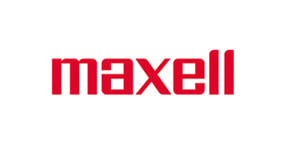Smart battery technology and usage tips
We often fail to recognize how the portable energy supply, the battery, was and continues to be pivotal to our technological advancement. Every successive technological achievement, in fact, relies upon it. From mobile phones and tablets to hearing assisted devices to electric cars and drones—none of these breakthroughs would be possible without the humble battery.
Our idea of batteries is that they are simply a dispenser of liquid or solid fuel. While this simplified definition is true, the process of measuring its stored energy is more complex. It is also essential. In contrast to earlier technology products like car tires, a battery looks the same throughout its use and does not show signs of wearing down. This presents a problem. We have no way of telling how much use we can still harness from the battery. We have no way to discern if it is suited for the power demand of our devices. We must cater a battery charger to the its size and chemistry. The smart battery is the answer.
Ordinary fuel gauges have a meter that show us how much fuel has been dispensed. A battery fuel gauge does not show definitions; instead, it displays the open circuit voltage (OCV) which, unfortunately, is not an accurate reference to the battery’s state-of-charge (SoC) at any given time. The battery also shrinks, loses energy, and diminishes its total capacity every time it charges. Its ampere-hour (Ah) rating becomes inaccurate, and the gauge can no longer determine capacity. Consequently, the gauge can report a full charge, even if the battery is actually half depleted. Such variables make the battery even trickier.
Reading the voltage might have been the simplest way of measuring SoC, but other factors complicate the task. Load currents lower voltage during discharge. The discharge voltage curve is flat on lithium and nickel-based batteries. Voltage is proportionally heightened by temperature. A previous charge or discharge can render the voltage reading inaccurate, so resting the battery for a few hours is needed to neutralize it.
Smart batteries introduce communication between the battery, the equipment, and the user. How ‘smart’ a battery may be, varies among manufacturers and regulatory agencies. The most basic smart battery might simply have a chip that sets the battery charger to the appropriate charge algorithm. The Smart Battery System (SBS) Forum, however, would not regard it as a smart battery based on its requirement of state-of-the-art indications, which are crucial to medical, military and computer devices where there can be no room for error.
With safety being among the main concerns, system intelligence is necessarily placed inside the battery pack. The SBS battery implements digital supervision—the chip that manages the battery charge—with which it communicates in a closed loop. Analog signals from the chemical battery also tell the charger to stop the charge when the battery is full. Temperature sensing is also added. A fuel gauge technology known as System Management Bus (SMBus), that incorporates integrated circuit (IC) chips systems in single-wire or two-wire systems, is offered by many smart battery manufacturers today. Benchmarq was the first company to introduce it in 1990.
Dallas Semiconductor Corp. introduced 1-Wire, a gauging system that communicates through a single wire at low speed. It combines data and clock to be transmitted in one line. The data is separated at the receiving end by the Manchester code, or phase code. 1-Wire stores the battery code and tracks battery data, including its voltage, current, temperature, and SoC information. A separate temperature-sensing wire is run on most batteries for safety reasons. The system comes with its own protocol and charger. A state of health (SoH) measurement requires “marrying” the host device to its designated battery in the Benchmarq single-wire solution.
1-Wire has a relatively low hardware cost which makes it appealing for cost-sensitive energy storage devices such as barcode scanner batteries, two-way-radio batteries, military batteries, and others.
The Role of the System Management Bus
The main purpose of SMBus comes is to remove charge control from the charger and delegate it to the battery. It was developed to agree on a single communications protocol and one set of data. The Duracell/Intel smart battery, standardized in 1995, consists of two separate lines for data and clock and was derived from a multi-master, multi-slave, single-ended serial computer bus by Philips Semiconductor called Inter-Integrated Circuit (I2C). The battery functions as the master and the charger as the slave obeying its command. With correct charge algorithms applied, the way is paved for a universal charger to serve current and future battery chemistries. Several standardized SMBus battery packs soon emerged in the late 1990s to power gadgets, such as medical devices and laptops. Standardization diverged, however, when manufacturers began to build their own battery packs, some adding a code to keep out vendors that sold unauthorized batteries. Some vendors disabled the battery pack upon reaching a preestablished cycle count, with an advanced warning alerting the user of the pack’s impending end-of-life.
SMBus batteries contain permanent data that include ID, type, manufacturer’s name, serial number, and manufacture date, as well as temporary data added during use, such as cycle count, usage pattern, and maintenance requirements. Some or all temporary data is renewed throughout the battery’s life. Voltage measurements are in 1mV increments, the current resolves to 0.5mA, and temperature accuracy is approximately ±3ºC.
Smart battery chargers are classified into 3 levels:
- Level 1 designates chargers which do not provide chemistry-independent charging and supported a single chemistry only.
- Level 2 classified chargers are those which are fully controlled by the Smart Battery for voltage and current commands. This level serves as in-circuit charging (common in laptops) and the battery and circuit are “married” to each other.
- Level 3 chargers can be both slave and master. The charger can take commands from the smart battery or impose its own charging algorithm by responding to the “chemical” battery. The capabilities of Level 3 chargers render them the top choice for industrial smart chargers with diverse applications including biomedical instruments and survey equipment.
Cheaper chargers are available that can accommodate SMBus batteries, but they may not be fully SBS compliant. These chargers are not endorsed by the SMBus battery manufacturers because they do not have full-fledged charge protocols and present safety concerns.
For select applications, the smart battery is the ideal solution to the major limitations inherent to the standard battery. Among the benefits:
- Provides state of charge and state of health
- Reflects full charge capacity estimations
- Communicates information that an ordinary battery does not show
- Provides a correct charging algorithm
- Reminds the user of periodic servicing needs
- Protected from unauthorized use
As expected, there are a few limitations worthy of mention. While a smart battery transmits current state of charge, it does not communicate actual runtime, and it will require occasional calibration. In general, it may also complicate your need for a battery charger as most smart battery chargers dually service smart and standard batteries. You can also expect a 25 percent increase to the battery cost.
Smart battery usage tips
|
You can learn more about rechargeable batteries and battery chargers with these great articles:
Factors to consider when choosing a battery charger
Practical guide to charging different types of batteries
Tips for repairing or upgrading battery packs










